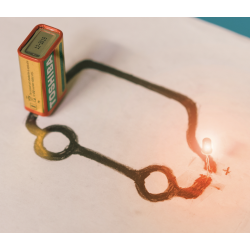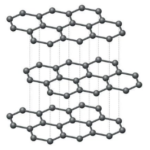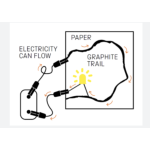- Student test on electrical conductivity
- Teacher notes and answers for this test
- Buy using PayID 47065111373 OR
- Your files will be emailed to you
- Download the App by pointing your camera at the QR code

Parent and Teacher Notes
This experiment explains electrical conductivity by allowing your child to create a simple circuit using the graphite found in pencils. Graphite conducts electricity well because of its structure. Changing the thickness of the circuit can also change how well it conducts electricity.
Scientific concepts covered:
Electrical conductivity: A measure of how easily electricity passes through a material. Electricity flows in the form of free electrons.
Graphite: Graphite is found in pencils. It is made up of layers of carbon atoms arranged in hexagonal shapes. Graphite is a good electrical conductor because it has many free electrons that can move through its carbon layers easily.
Electrical resistance: A measure of how difficult it is for electricity to pass through a material. In the thinner bars of graphite, there were fewer layers which meant the electrons were more likely to bump into the carbon atoms. This made it more difficult for them to travel through the material, meaning there was more electrical resistance.
Production Notes
Image displayed for illustrative purposes only. if you are the copyright owner, please contact us.
AR12 - How does electrical conductivity work?
- Brand: Kilbaha Education
- Product Code: How does electrical conductivity work?
- Availability: In Stock
-
$10.00
Related Products
Tags: Augmented Reality (AR)



